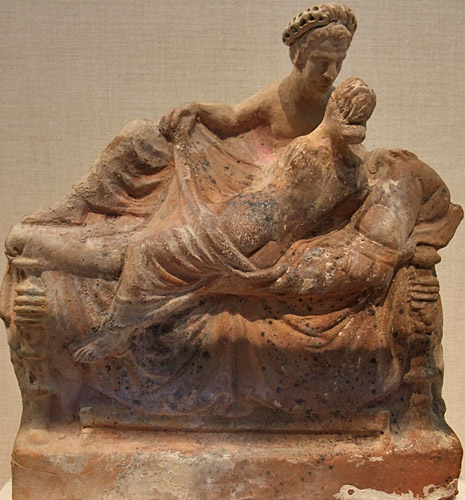 Terracotta lamp filler, Campania,
mid 2nd century BCE Terracotta lamp filler, Campania,
mid 2nd century BCE |
The unnamed mulier to whom Catullus addresses this playful epigram is probably the married woman he called Lesbia, his literary mistress and the subject of some twenty six of his love poems. The last line of the poem, self-mocking in tone, contains a commonplace in Greek literature, a reflection of the male attitude toward statements made by women. The convention is that the beloved is in charge of the relationship while the lover requires constant reassurance of her affection. The poem is written in elegiac couplet, a literary form which consists of two lines of poetry in dactylic meter: the first line is in hexameter, the second in pentameter (see this illustration of the meter). |
| Nulli se dicit mulier mea nubere malle | |
|
quam mihi, non si se Iuppiter ipse petat. |
|
| dicit: sed mulier cupido quod dicit amanti | |
Click on the underlined words for translation aids and commentary, which will appear in a small window. Close this small window after each use.